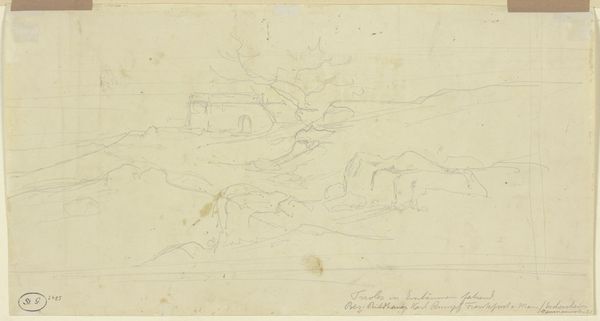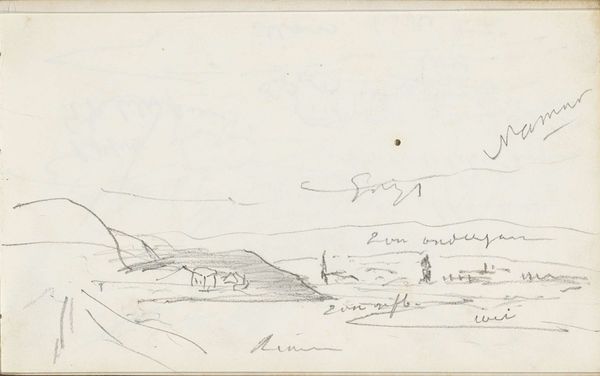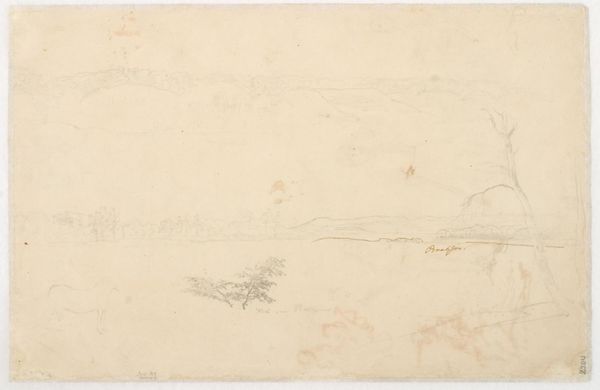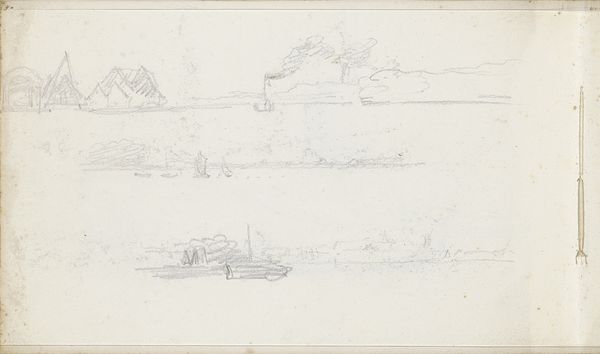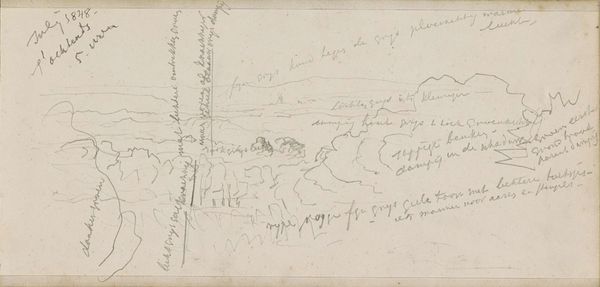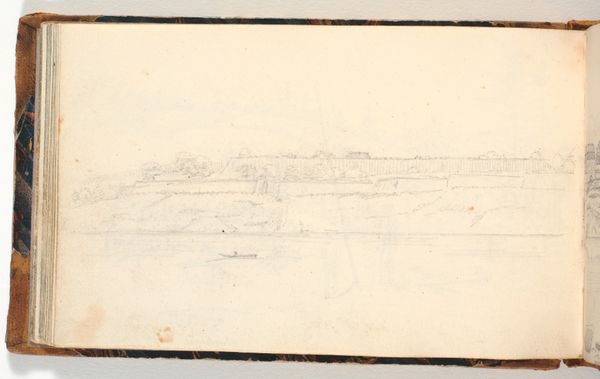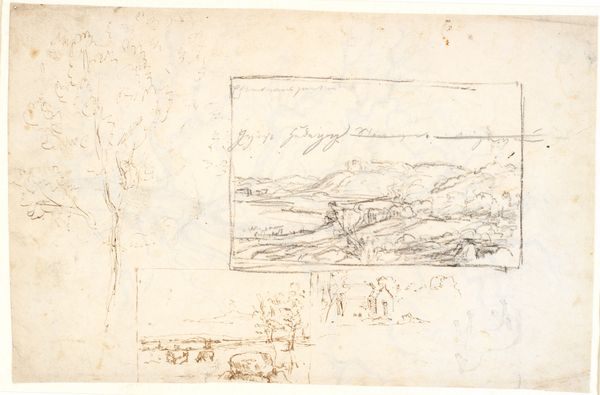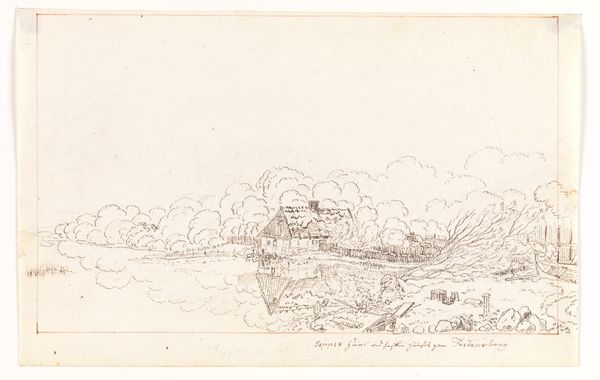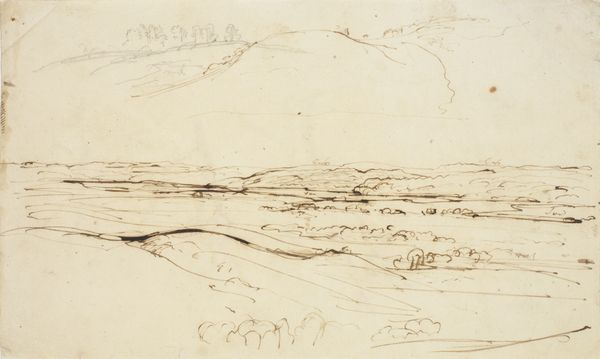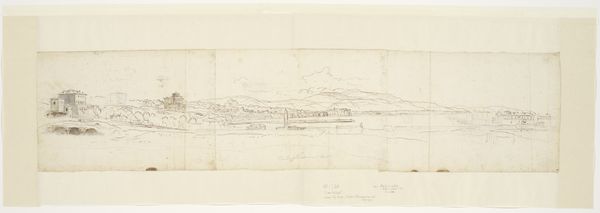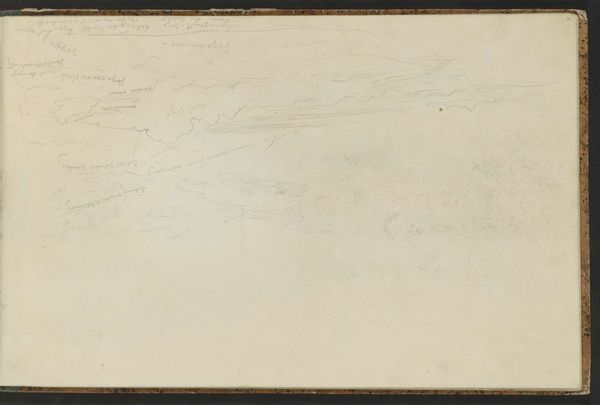
Udkast til en landskabskomposition. Maria med barnet 1840
0:00
0:00
drawing
#
portrait
#
drawing
#
water colours
#
landscape
#
history-painting
#
realism
Dimensions: 219 mm (height) x 405 mm (width) (bladmaal)
Curator: This drawing is titled, "Draft for a Landscape Composition. Mary with Child." It was created around 1840 by Dankvart Dreyer, and we believe it represents an important intersection of landscape and history painting within the context of Danish art at the time. Editor: It strikes me as rather subdued. The sepia tones and the somewhat sparse lines give it an ethereal, almost melancholic feel. There's a clear juxtaposition of the bucolic scene and the figure of Mary with the child—a classic Madonna and Child. It’s compelling, though. Curator: It’s intriguing that Dreyer, known primarily for his landscapes, integrates this religious iconography. Consider the evolving role of landscape painting in 19th-century Denmark; it's a period when national identity and idealized depictions of the homeland become important artistic themes. This drawing reflects that, situating a traditionally religious subject within the landscape itself. Editor: I wonder about the political and social undercurrents. Was this Madonna meant to embody a particular ideal of motherhood in that era? Were there specific gender roles or societal expectations being projected onto the figure of Mary? I find myself immediately thinking about representations of women in religious contexts and the narratives they perpetuate. Curator: These are crucial considerations. We can also look at this piece within the history of academic artistic training. Compositional studies like these, combining figural work and landscape, were part of the artist's development. It's interesting to ponder how Dreyer positions himself within those established artistic traditions and, perhaps, subverts them in his later works. Editor: It definitely makes one consider the positionality of both Mary and the artist in society, the negotiation between spiritual symbolism, societal role, and landscape. Looking closer, I wonder about that red spot on the child's face. Is that just a rogue daub of color or a deliberate artistic choice loaded with symbolic intention? Curator: Perhaps we can dig into his intentions at the museum archives and piece more of the historical picture together. Editor: That little dab of red really got my activist heartstrings singing. This work is small, and it has truly set the stage to have bigger conversations!
Comments
No comments
Be the first to comment and join the conversation on the ultimate creative platform.
